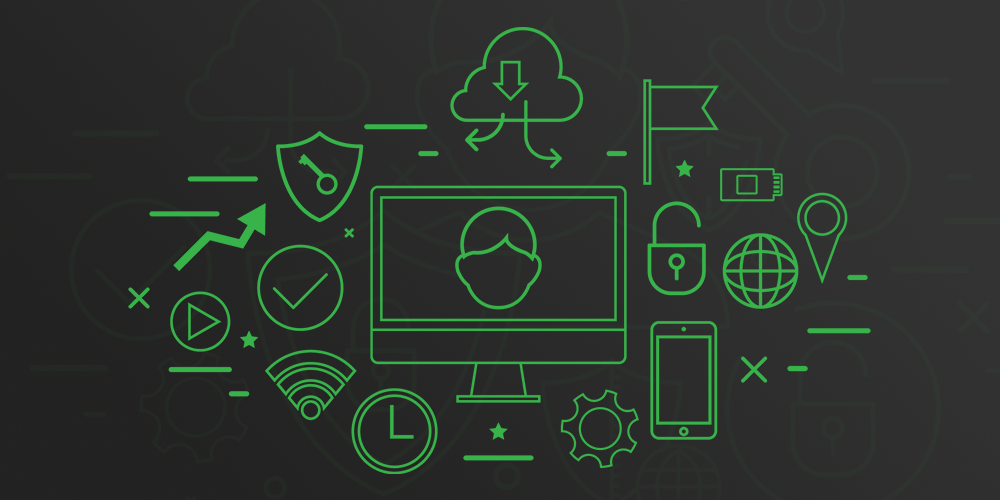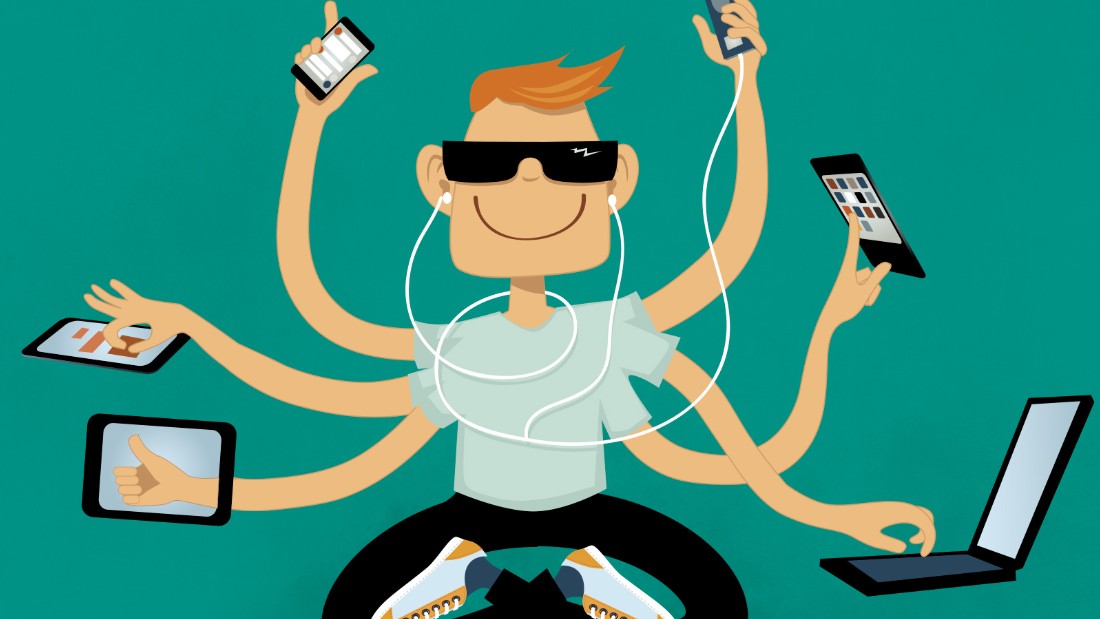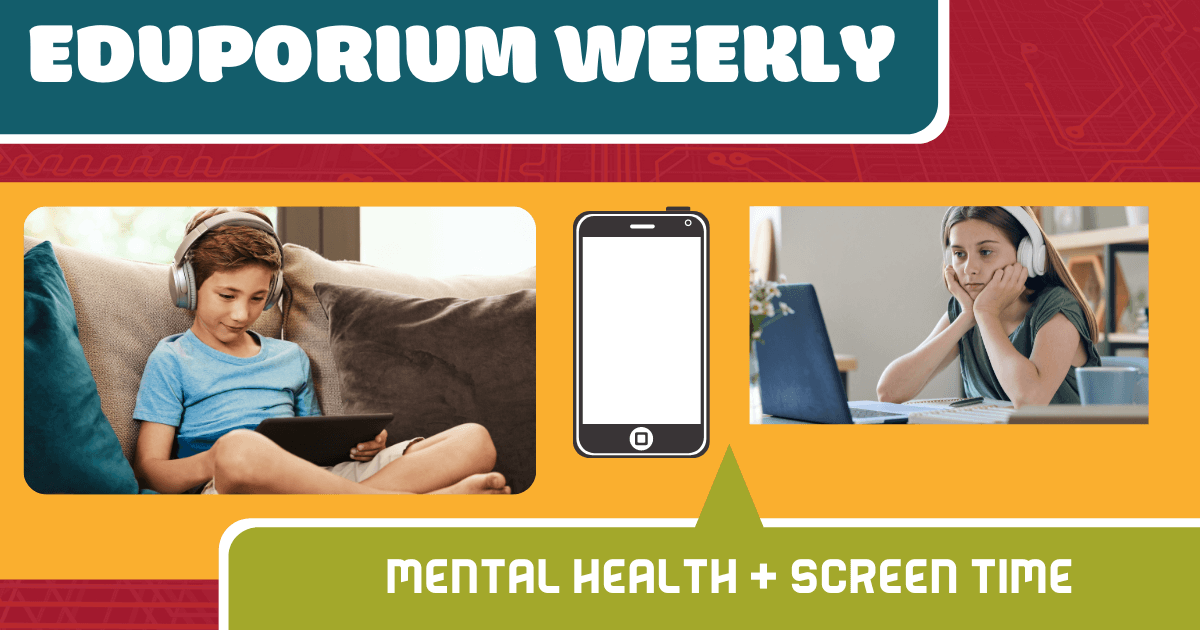We spend a lot of time using technology, looking at screens for hours on end, and it is even more prevalent thanks to Zoom meetings and virtual classes. This not only resulted in teachers spending more time staring at screens, it’s, of course, been somewhat similar for kids. While many other pandemic-induced issues, like equity, isolation, relationships, and SEL have been some of the key focal areas, the effects of skyrocketing screen time have also caught up with many students. As we continue to hone in on student mental health concerns, it’s important that parents and educators work together to help keep digital wellbeing in focus.
Increased Screen Time and Digital Wellbeing
Brought on by our reliance on technology for work, convenience, and learning, the Google team started the Digital Wellbeing campaign. Essentially, the movement helps raise awareness when it comes to the amount of time we spend using technology, looking at screens each day, and the resulting mental health effects it's had on children. Whether it’s a computer or a mobile device, too much exposure to screens can affect kids both physically and mentally—something made more pressing as a result of distance learning over the last three years. Physical effects of extended screen time for kids include health issues, like headaches, while mental effects could include things like shortened attention spans or decreased productivity. So, knowing when and how to impose limits remains important.
Setting limits on student screen time.
The first thing teachers and parents can do is set limits. Whatever you feel is appropriate for the student’s age should work—perhaps two hours every day for school and fun. As for parents, they may also find that limiting looking at smartphones, tablets, or laptops for non-learning purposes is helpful too. Maybe you’ve heard about the blue light effect from phones or experimented with night mode on your own device. These technologies emerged because people—including kids—spend a lot of time looking at screens just before going to sleep. This could increase cortisol and deplete melatonin, which prevents us from reaching deep sleep and could lead to insomnia.
Using technology for digital insights.
Many features of Google’s Wellbeing tool, which is available on Android devices, can provide value to the parents of digitally native kids. It shares data regarding how much they use specific apps and automatically switches the light to grayscale at certain times. Parents can even use it to limit the amount of time children spend using certain apps each day. Other digital wellbeing tools help us to limit common distractions, like receiving notifications. If we’re constantly receiving notifications, it's very distracting—especially for those trying to focus on staying away from screens. One solution is to pause notifications until a predetermined time (say 12 PM) so that they’re not constantly coming in. This is something that’s beneficial among both teachers and students and, hopefully, helps keep everyone's mental health strong.
Digital Wellness and the Pandemic
Digital wellness is so important all the time but it certainly has a different feel as we continue navigating the pandemic era. While technology helped to keep us connected, overexposure has led to various unintended negative effects—especially on children. Couple that with the fact that isolation also affected mental health in so many of us and it's definitely not ideal since screens won't be going away. Fortunately, many devices now have features that help to support healthier habits, such as monitoring continuous usage or providing truly informative data. Devices can provide indications of when to scale back screen time, how eye strain could perpetuate, when to increase physical activity, and how to achieve better sleep.
Limiting stress by limiting screen time.
All those factors go into sustaining mental health and pretty much all weren't on the radar a few years ago. As we learn more about the impacts that constant technology usage has, however, it's become much more important. Also, digital wellness means different things for teachers than for students. Teachers, as we saw, had to start doing a whole lot more when schools closed and, even back in the classroom, so much of their work still involves screen use. It’s obviously been an adjustment and the constant staring at screens could be affecting them physically. Also, with more work comes less physical activity, so sleep tracking, dietary tracking, and mental health apps could help.
Finding a balance between connecting and signing off.
It has been nearly impossible to continue living productively without relying on technology, especially while everyone was home all day. Engaging with digital tools—for children and adults—isn't always bad as long as they’re using them for good sometimes. Parents and children, for example, can stick to any screen time schedules that have worked. In some cases, it also might be easy to separate educational screen use from personal screen use and get children to agree to limit the latter. It is now also common for kids to routinely use technology to keep in touch with friends and family, however, so you can consider this, too. It's tough but pausing and taking a step back can really help improve mental health in the long run.

Screen Time and Kids
Screen time has become a huge element of learning and it’s already a huge part of many children's lives. Of course, spending time looking at screens is pretty much essential for 21st century learning whether it's in the classroom or at home. With that said, teachers and parents can distinguish between negative screen time versus positive screen time. The most important factor when it comes to screen time is the amount of time students spend looking at them. And, we haven't all fully returned to pre-pandemic screen time levels even as education is essentially normal again. It goes for everyone, especially younger students, but we’ve never really been exposed to screens this much and there remain a lot of unknowns.
Active screen time vs. passive screen time.
We need patience while we unpack the physical and intellectual effects this much screen time can have on kids. We also, however, must keep in mind that technology drives delivery and reception of information and information guides us forward. It's also enlightening to think about how active screen time can even help to benefit children. They can get a more positive experience when playing an educational game, for example, than watching a show or videos. Perhaps the most positive way to look at screen time is as an experience that invites participation and involves reading. Screen time can also involve creating—not just consuming. This simply comes down to finding the right applications or online, age-appropriate tools for students.
Using screen time to learn.
Research from Common Sense shows that screen time for kids will involve creating just four percent of the time. They’re usually simply using technology to watch visual content—except they’re doing it much more closely to their faces and eyes. On the other hand, media can teach children something, which results in an example of positive screen time. If watching videos on learning to ride bikes, for example, they can engage more deeply and be more active. So, when it comes to limits, some argue that children between 0-2 years old should have no screen time while others insist that less than two hours per day is okay. As children get older, data shows that they spend 8-10 hours per day looking at screens—a similar number for tweens (8-12) and teens (13-18). And, that’s usually not including using technology for school work.
Student Mental Health Results from Distance Learning
The topic of digital health has really gained steam in the last couple years and students have had to learn a lot about managing it for themselves. Remote learning may never fully stop and, even if it's just because of weather, that digital balance will remain key. We know students struggled with mental health while stuck at home, glued to devices, and largely isolated from their friends. And, living through the pandemic really was traumatizing enough, so the constant need for screens didn't help. In any event, these ideas can truly help teachers continue rebuilding mental health in students and move forward through challenging situations.
Supporting mental health away from screens.
Teachers have also tried adjustments to grading, deadlines, and student interactions to help to ease their minds a little bit. This consistency has been important—as is showing empathy, focusing on relationships, and addressing learning loss. Though things are certainly different, consistent feedback, communication, and socialization can truly help provide some comfortability for students. Simply being a little more vigilant can also help and teachers have been able to notice when students just don’t seem right—whether that is due to digital fatigue or they're simply battling something else. There are bigger concerns than acing their classes, so teachers simply being available to chat can go a long way.
Teachers finding a balance.
Teachers already do so much and they simply can't be an educator, a parent, a friend, and a counselor to every student. It's also important, as you've heard numerous times, for them to put their mental health first and accept this reality. As much as they would love to do everything for every student, it’s just not feasible, especially when keeping their own mental and physical wellbeing in check. As we said, educators can look for signs to possibly identify student mental health issues and offer initial assistance. If necessary, it’s best to then refer them to a mental health professional for additional guidance. They could also ask friends and family members to check in on them and suggest some wellness activities. We know it’s tough but mental health and stability among teachers and students are equally important.

Screen Time and Mental Health
We do not yet know everything about how greatly screen time affects the mental health of students. We do know, however, that there's some connections between screen time and potential health conditions among both children and adults. Research will continue over the years but there definitely is a connection between screen time, physical health, and mental health. Just think about bullying for a moment. Kids probably see dozens of examples of online bullying while they scroll through social media feeds or view videos. This can take a toll on them simply with the realization of what’s going on and it can be a lot worse if they are being targeted with what's said, written, filmed, and posted.
Focusing on physical and emotional health, too.
There’s also that interaction element of screen time—or, rather, the lack of interaction. While kids are often communicating with their friends via online platforms (sometimes constantly), at the same time, they'll miss out on the physical interaction that's important to friendships and development. With constant connectivity rather than connection, children can sometimes suffer a bit with developing interpersonal skills. This could also negatively affect cognitive functioning in a similar way that a poor diet can affect their physical health. Specifically, research from the Common Sense team has revealed that children who are exposed to digital media and screens the most wind up being the least happy and well-adjusted in school. This, in turn, has led many to adjust screen time rules accordingly.
What can we do?
It rests largely on parents to limit the amount of time children spend staring at screens. Technology access typically means kids use it and, while not every student has all-the-time access, those who do need a limit. Limiting access to screens helps curb potential health issues and leaving devices in one spot can also help limit exposure. If kids can't carry devices around with them, they might be less likely to use the technology excessively. Being unable to access technology will help curb usage, which is important to keeping mental health strong in children. This is definitely a topic parents haven’t always had to think about but it’s become very important. So, remember that just because devices are accessible, they don't always need to be on.
For the latest EdTech, STEM, and 21st century education news, follow us on Twitter and Instagram. Like us on Facebook, too, or sign up for our newsletter for our latest product announcements and offerings. If you have an idea for an Eduporium Weekly theme, send us a message on social media or comment below. Feel free to share your thoughts on students and screen time as well!



